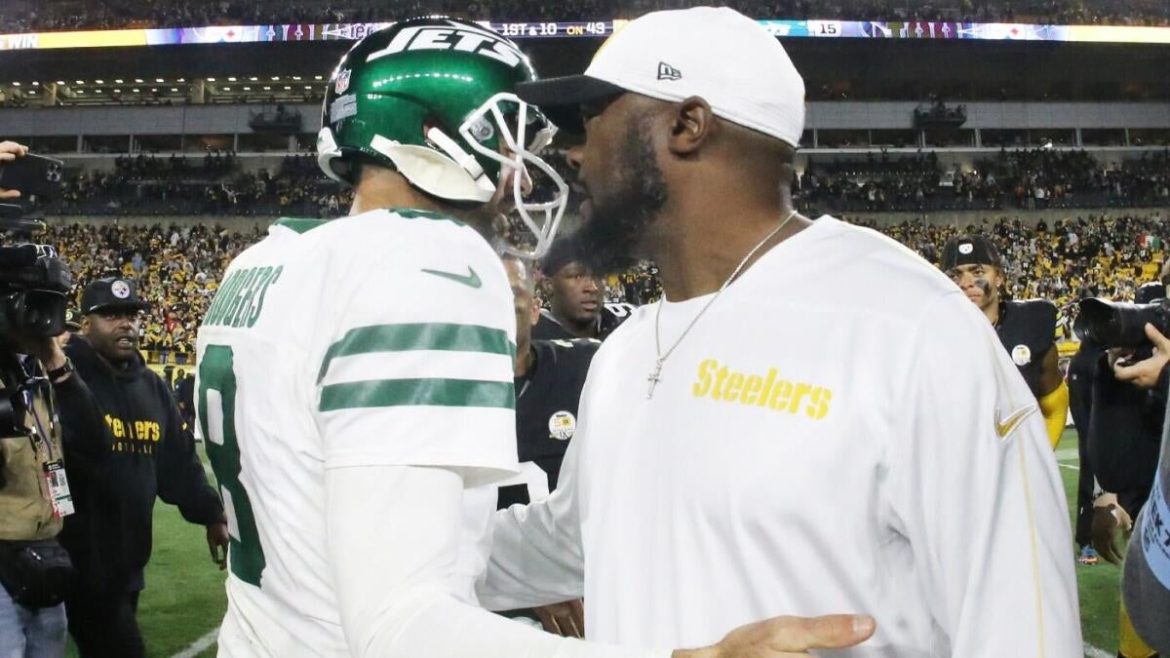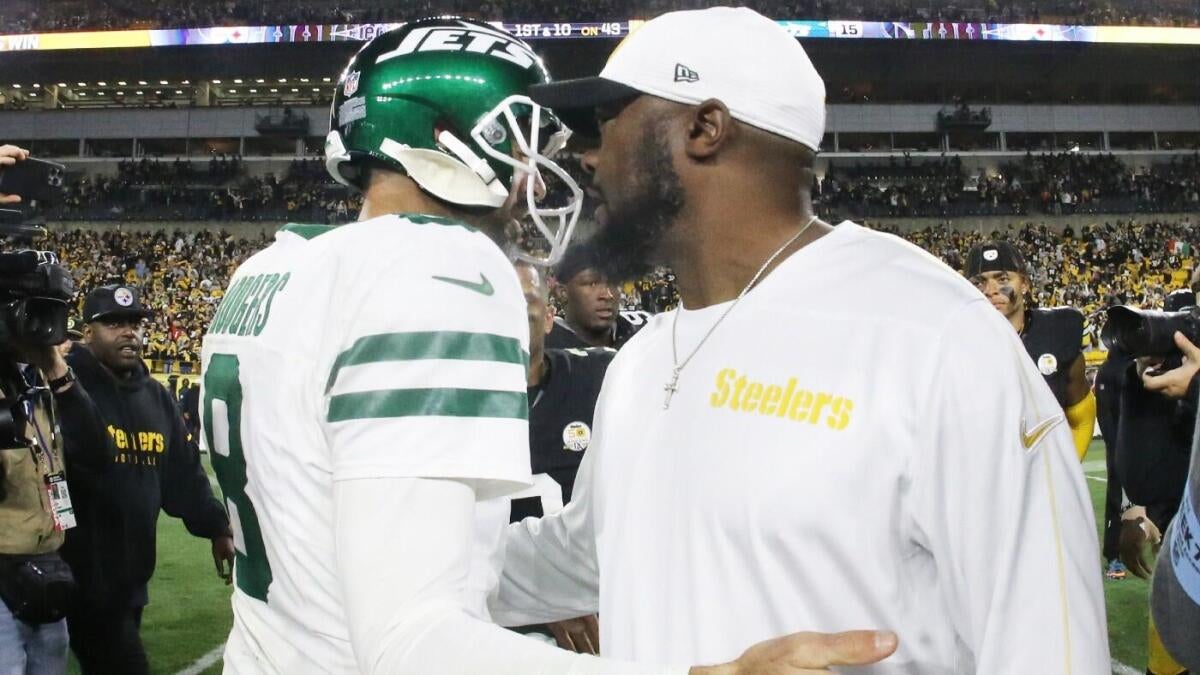The Aaron Rodgers-Steelers Partnership: A Potential NFL Game-Changer
The news of Aaron Rodgers joining the Pittsburgh Steelers for the 2025 NFL season has set off ripples across the football community, stirring a mix of excitement, skepticism, and cautious optimism. This prospective pairing—legendary quarterback meets storied franchise under the steady guidance of Coach Mike Tomlin—carries significant weight given the Steelers’ recent playoff drought and Rodgers’ complex career trajectory. Here, we break down the dynamics, implications, and prospects of this NFL rendezvous.
—
A High-Stakes Gamble for the Steelers
The Steelers haven’t tasted playoff success since the 2016 season, compiling a daunting 0-6 record since then. Enter Aaron Rodgers, a four-time NFL MVP known for his remarkable career but also shadowed by recent turbulence: multiple losing seasons, midseason coaching changes, and a high-profile trade request in 2022. This backdrop lays bare the risk the Steelers are taking.
Rodgers will be 41 during this upcoming stint—typically an age where quarterbacks either gracefully retire or shift into less central roles. Yet, Pittsburgh is rolling the dice, clearly hoping Rodgers can inject veteran leadership and elite skill into a roster desperate for a spark. The one-year deal points to a short-term experiment, possibly a last hurrah for Rodgers, but for the Steelers, it might be a last chance to reignite their fading playoff hopes.
—
Mike Tomlin’s Role: The Underrated Magnet
Mike Tomlin looms large in Rodgers’ decision to sign with Pittsburgh. Known for his leadership and stability, Tomlin reportedly worked closely within Rodgers’ timeline, helping to orchestrate this unlikely union. Tomlin’s reputation as a draw for a quarterback of Rodgers’ caliber cannot be understated—it is a rare alignment where a veteran coach’s structure appeals deeply to a seasoned signal-caller.
This connection revives conversations around what success would look like: even one playoff win under Tomlin and Rodgers would likely cement their partnership as a success, given the Steelers’ dry spell. Their combined experience could galvanize a team hungry for a return to relevance.
—
Transforming the Steelers: Winners and Losers
Adding Rodgers ostensibly rearranges the Steelers’ balance sheet, but not all changes are clear winners. The quarterback carousel might steady, ending recent instability at this pivotal position. Schedule-wise, Rodgers faces intriguing matchups, including games against former teams like the Green Bay Packers and the New York Jets, promising captivating storylines throughout 2025.
On the flip side, integrating a quarterback of Rodgers’ stature into Pittsburgh’s existing framework might shuffle roles, impact locker room dynamics, and affect emerging players’ development. There’s no guarantee his presence elevates the entire team immediately, especially as age and wear come into play.
—
The Nostalgia and Narrative: ‘Impossible’ Feats in Sight
Rodgers brings a fascinating narrative thread to the Steelers—he has endured four losing seasons in 17 years as a starter. Those turbulent periods included coaching firings and personal trade requests, underscoring a career filled with both brilliance and challenges. Could Pittsburgh, under Tomlin’s leadership, provide a stable “home” for the twilight of Rodgers’ career? The pairing could achieve two unlikely goals: reviving a franchise and allowing a football icon to finish strong.
This story enriches the NFL’s tapestry—one of experience, redemption, and the relentless pursuit of victory against odds.
—
Perceptions and Reality: ESPN and the NFL Community React
Responses to the signing have ranged widely. ESPN assigned a “surprising grade” to the deal, reflecting the unpredictability of how it will play out. Fans and analysts alike weigh Rodgers’ historic achievements against questions about his current form and the risk Pittsburgh assumes in betting on an aging star.
Within NFL circles, the deal underscores how veteran leadership and coaching relationships often influence roster decisions more than raw statistics alone. Rodgers’ visit to the Steelers, his interactions with the front office, and the coaching staff’s openness to accommodate his needs all illustrate a subtle, strategic approach by Pittsburgh.
—
What Lies Ahead for Rodgers and the Steelers?
The enduring question: Does Aaron Rodgers’ arrival truly make the Steelers better? While adding a quarterback of his pedigree ends “the quarterback musical chairs” saga, translating individual brilliance into team success remains a challenge. Yet, the presence of Rodgers automatically boosts Pittsburgh’s profile, attracts media attention, and potentially entices other talent.
If Rodgers, Tomlin, and the Steelers can synchronize their efforts effectively, the 2025 season might emerge as a captivating chapter in NFL history, marked by a rare quarterback-coach pairing that defies conventional odds.
—
Conclusion: A Rendezvous Worth Watching
This is more than a player signing; it’s a collision of legacy, hope, and strategic risk for both Aaron Rodgers and the Pittsburgh Steelers. The deal brings a mix of anticipation and uncertainty, blending a storied past with a precarious future.
Whether Rodgers’ tenure with the Steelers becomes a masterstroke or a fleeting experiment hinges on many variables: health, team chemistry, and the ability to seize pivotal moments in the playoffs. Yet, one thing is certain—this partnership enriches the NFL narrative with promising potential, a compelling storyline that fans and analysts will watch closely through the 2025 season and beyond.





